This trip was filled with activities and educational experiences, beginning with the very first hour on the very first day. As we started off LA-ward from our CSU Channel Islands campus, we started learning about management challenges along the coast of PCH (Highway 1). At that moment I knew this trip would be worth the experience. I had not been to Hawaii before this and could barely contain my excitement. As we emerged from the airport on Oahu, I could already tell the difference in temperature. It was humid, but also cool. That first night was exciting for our entire group, starting with that most interesting bus ride in Waikiki. A few locals were interested in why our group was on the island and were willing to tell us how to get to some of the places we had planned to go to. They were all very friendly and I could already feel a different kind of vibe compared to the people at home.
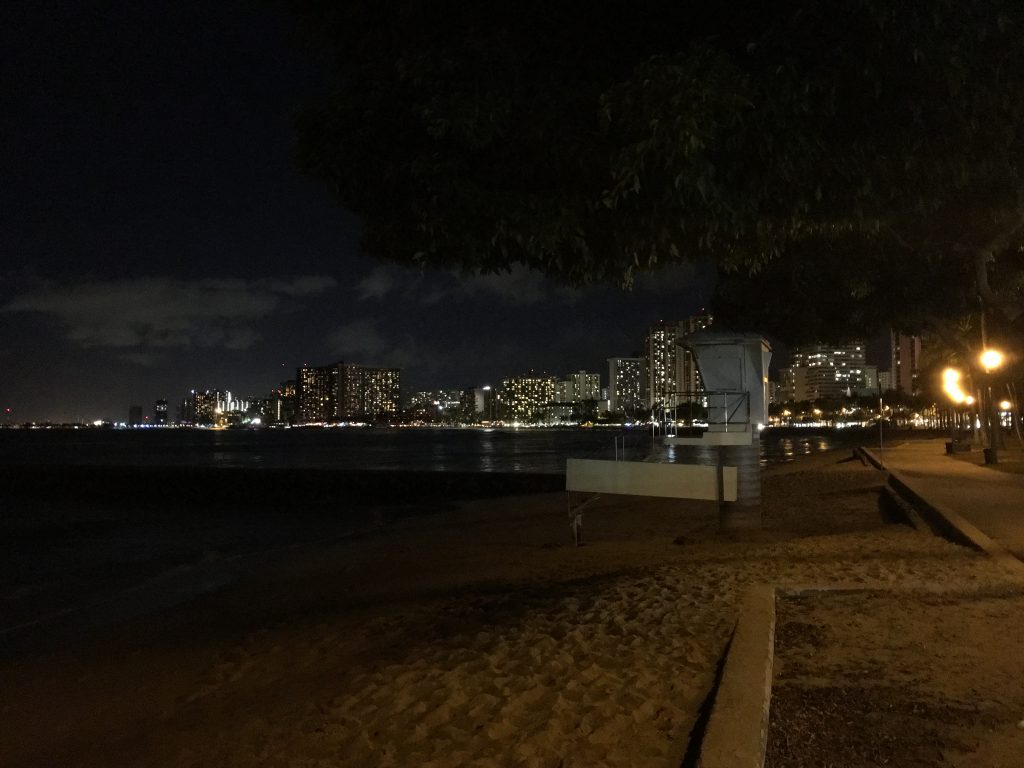
photo: Waikiki beach at night
The first night we slept on the beach. It admittedly was not my favorite part of our trip, but was a true bonding experience for all of us. Ultimately I’m glad we did it. The longest 48 hours were ahead of us as we waited for the start of our fish auction tour and subsequent travel to the Big Island of Hawaii. That fish auction was very cool. I did not know many of the management practices that were in effect within these fisheries. I also had no idea that Hawaii offered so many great, fresh pelagic fish. By the end of that experience I had learned how to check the quality of fish such as tuna and wahoo when buying from markets or restaurants. 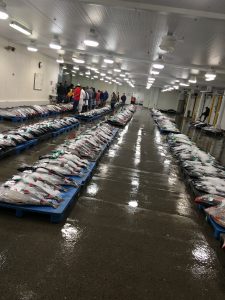
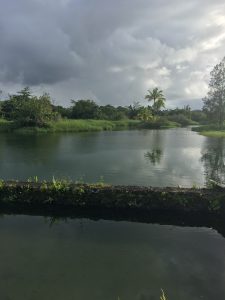

After that long day in Oahu, we finally found ourselves flying to the Big Island where we spent the remainder of our trip. On Hawaii we learned many cultural, historical, and educational aspects. The Hawaiian coastal management we observed was somewhat different from our California efforts.
One activity we learned was of growing importance was traditional Polynesian mariculture in the form of estuarine fish ponds. These fish ponds are helping resurrect the importance of community being involved with environmentally appropriate management and fostering their own food security. Some of these fish ponds are affiliated with local schools and as such were helping get the local children involved in these sustainable practices.
The Maona Community Garden was somewhat similar to those fish ponds, also seeking to encourage the local community to directly engage with all aspects of raising their own food. We also learned about their first steps towards aquaculture and hydroponic practices. Looking to the future, I think these practices will be very prevalent in society if we continue to increase our global population. There has to be some way to feed all those people and aquaculture could possibly be part of the solution.
Volcanoes National Park was something very interesting to see. We saw actual lava burbling and flowing out from that rocky crater. Our perch atop the visitor center and Jagger Museum afforded chances to learn about the history of the volcanoes and of Hawaii while we spied that hot orange magma bursting forth into the tropical air. We also learned that much of the island’s vegetation is invasive. Nearly all of it in fact. I had no idea about the extent of those invasions prior to our trip. These islands are so special and potentially sensitive that any additional introduction could alter these ecosystems permanently.
Overall, this trip was very exciting and I am so thankful I had the opportunity to experience it with my peers. It was very educational and I can honestly say I came back to the mainland with an expanded understanding of coastal management and environmental management more generally. Thank you to our Instructionally Related Activities Committee and our ESRM Program for helping us make this trip a reality. And thank you to Dr. Anderson for taking us all on this memorable and amazing experience.


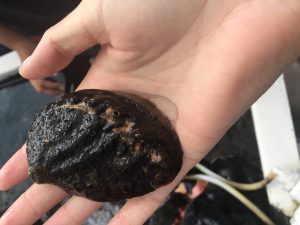
- Lava tubes at Volcano National Park 2. Vibrant gecko at community garden 3. Abalone fishery


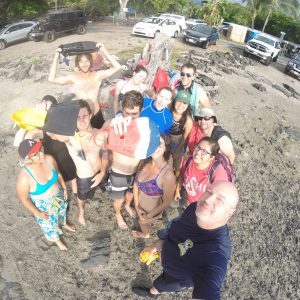
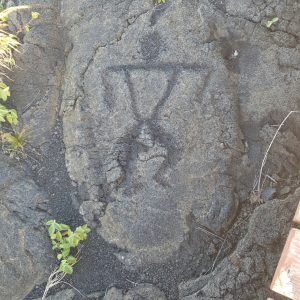


Leave a Reply